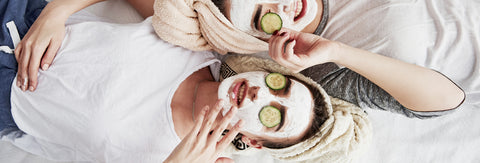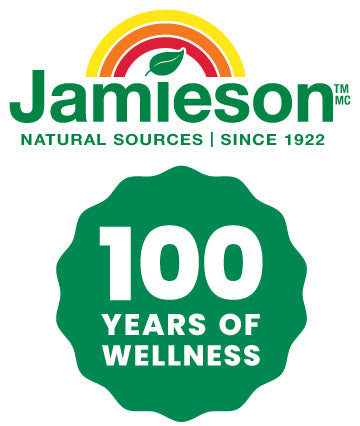Everyone ages. And while you may not have much power over this basic fact of life, your appearance comes with a few more controls. The way you look is largely dependent on how well you care for yourself over the years, and your face usually tells the story. Your skin is charged with so much heavy lifting. It houses nerve receptors that tell you what you’re feeling, helps control fluid and electrolyte levels, controls your body temperature and protects you from the environment around you. With much work and little reward, it’s critical that you care for your skin as it ages with you. Though important to care for all your skin, a steady regimen will ensure you are always putting your best face forward. If you’re in need of a little guidance, look no further. Here’s how to adapt your skincare routine through life stages.
20s
What’s going on?
We know exactly how much effort goes into being a 20-something. Between friends, family and life coming right at you, your 20s are a time of intense change, and if anything tells the story, it’s your skin. As it becomes thinner and less elastic, signs of aging become more visible. Around 25, you may discover features that were ‘never there’, like nasolabial folds (see: ‘smile lines’ that run from the nose to the corner of the lips). It’s also likely you’ll spot the signs of wear and tear (via all-nighters and refusing to remove your makeup before bed) beginning to emerge. Since your 20s are for exploration, this decade is often spent in big (read: polluted) cities chasing big dreams. The aftermath? A face full of free-radicals ready to tell the tale. But fear not, there is hope! Around this time, you may come to terms with the fact that what you do in your 20s will show up in your 40s, 50s and beyond, so it’s a good time to begin testing what works best for you.
What do you need?
Step one? A cleanser. Responsible for restoring your natural skin barrier after facing the world and its pollutants, it is important for your cleanser to be effective, but gentle. While something light, buildable and gel-based should do the job, our best advice is to let your face tell you what it likes. Once you’ve come to an agreement, be sure to cleanse twice a day, morning and night, and try to incorporate something retinol-based twice a week. Since much of the damage will linger until later in life, we’d also caution you not to underestimate the lasting effects of sun damage. If you haven’t already, take this time to cut the tanning, amp up on antioxidant-rich foods to counter photodamage and consider a supplement for filling the gap. You should also make sure your moisturizer has SPF in it. Oh, and people with the best skin know to harness the power of the double cleanse (first with an oil, then with a cleanser). Get this one down pat and trust us, you’ll thank us in your thirties 😉
Suggested supplement: ProVitamina Hydrating Gel-Cream Clear Skin
30s
What can I expect?
While your 30s retain much of your youthful appearance, things escalate quickly midway. Though you can expect to see less of that teenage sheen, you may also notice your skin to be noticeably less bouncy. Through the loss of elastin and collagen, your skin will begin to lose elasticity, resulting in a drop of volume. You may also see the emergence of crow’s feet around your eyes, as well as the appearance of some sunspots. Something else to look forward to? The ‘dreaded 11s’ – the pair of lines that may have developed between your brows. These, and the nasolabial lines might get deeper in your 30s, but not to fret!
Here’s how to deal
To counter the deepening lines, experts suggest you increase your retinol product to three times weekly, ensure foundations and moisturizers are oil-free and keep up with sunscreen. They also suggest you add hyaluronic acid serums to your regimen, and to ensure you are eating foods rich in vitamin C and amino acids as they stimulate your skin’s natural collagen production. People also start to consider chemical peels in their 30s, a process in which Alpha Hydroxy Acids (like glycolic, lactic and malic acid), Beta Hydroxy Acids (like salicylic acid) and gentle exfoliants like fruit enzymes come together to disintegrate the sheets of dead cells on your face, revealing a visibly refreshed complexion.
Suggested supplement: Collagen Anti-Wrinkle Liquid
40s
Is it really that bad?
While empowering overall, your 40s are when your 20s creep up on you. In this decade, bad habits like poor diet, smoking, and lack of preventative skincare can show up in the form of slower bodies, a developing ‘purse string muscle’ and even deeper wrinkles and lines. And since your cell renewal has nearly halved since your 20s, you might observe your skin as noticeably thinner, your fine lines a bit more prominent, and your wrinkles set in with confidence.
Here's how to feel your best:
This time in your life is about promoting collagen and elastin production, the two proteins that keep your skin plump. With your expression lines staking more claim on your plane, it’s time to take your moisturizer game to the next level. Opt for something thicker in this decade and alternate at night for a more nutritive cream. This step is crucial, as your face absorbs more overnight as it is not competing with the dirt and natural pollutants of the day. It may also be time to begin introducing eye creams and serums to double down on moisture. You should also keep in mind that there is a real difference between a regular serum and an anti-aging serum, with the first targeting specific trouble areas (like acne or inflammation) and the second looking at cell renewal. In the latter, look for acronyms like EGF (epidermal growth factor), an ingredient used in medicine to speed up wound recovery (and in anti-aging to reduce the appearance of fine lines and wrinkles).
Suggested supplement: Active Collagen
50s and beyond
What you should know by now
If you’ve kept up on sunscreen and moderate sun exposure, then your skin should have a seamless transition into your 50s and beyond. If you haven’t, you might see deeper lines and huge collagen breakdown. This can cause skin to loosen and faces to look droopy. In our 50s, we also lose some of the fat under the skin, making it look thinner and more transparent. This sets the stage for blood vessels under the skin to show more, causing a discolouration. A drop in estrogen in your 50s will cause your skin to look and feel drier, making the other impacts of aging more discernible.
These will keep you feeling great
Gravity takes its toll here, so you need to focus on skin treatments that tighten the skin. This means rich moisturizers with dense ingredients like shea butter. If your routine so far has consisted of the ‘soap and water’ thing, your nighttime regimen will need revisiting. Time to look for non-drying cleanser to wash your face and neck, and bump the retinol use up to 5-6 times a week.
Suggested supplement: ProVitamina Retinol Night Cream
Though genetics play a significant role, the basics are simple: a good diet, lifestyle and skincare regimen ensure you look great on the outside, and embracing the journey will safeguard your soul. After all, aging in grace is the most irrefutable way to look your best at any age.
Sources:
https://www.webmd.com/beauty/features/skin-ages#1
https://medlineplus.gov/ency/article/004014.htm
https://www.galderma.com/what-happens-your-skin-you-age
https://edit.sundayriley.com/skin-changes-at-30/
https://ivywildbeauty.com/blog/what-happens-to-your-skin-in-your-20s-30s-and-40s/
https://theeverygirl.com/skincare-commandments-20s/
https://www.dermstore.com/blog/top_ten/skin-care-routine-40s/




